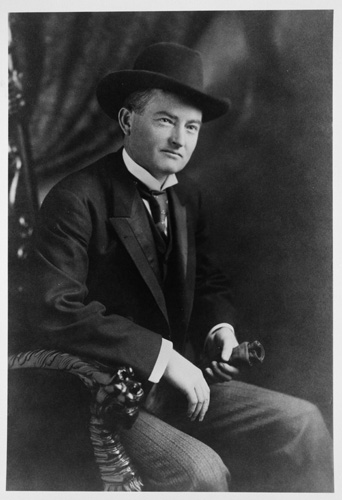
John Nance “Cactus Jack” Garner (1868–1967) was speaker of the U.S. House of Representatives during the last two years of Herbert Hoover’s presidency (1931–1933) and vice president during President Franklin D. Roosevelt’s first two terms (1933–1941). Garner was a dominant national political figure who played a critical role in the passage of much of the New Deal legislation aimed at alleviating or ending the most severe economic crisis in U.S. history. Considered to be the godfather of Texas politics, Garner paved the way for Texans to occupy the highest levels of the nation’s government, including the oval office.
Early life
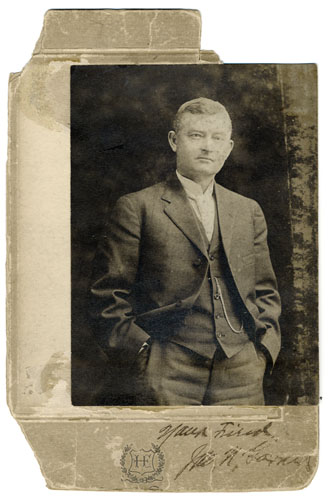
Garner was born on November 22, 1868, in post-Civil War Texas. He grew up in a log cabin at Blossom Prairie in Red River County in northeast Texas. His father, John Nance Garner III, came to Texas from Tennessee, served in the Confederate army, and settled after the war in Red River County. The elder Garner became a successful cotton farmer and local politician in his home county. Garner’s mother, Sarah Guest Garner, the daughter of a banker, encouraged her son’s education. The young Garner attended small rural schools in Bogata and Blossom Prairie. At eighteen he went to Vanderbilt University in Nashville, Tennessee, where he stayed only one semester, possibly because of ill health or the rudimentary preparation provided by his inadequate rural school. He returned to Clarksville, Texas, to read law and was admitted to the bar in 1890.
Move to Uvalde (1892)
In 1892, Garner moved to Uvalde, Texas, where he quickly developed his legal and business career. He joined the firm of Judge John H. Clark as circuit-riding attorney in various south Texas counties. His cases were diverse, ranging from land title disputes to horse and cattle theft. At one point, he owned the Uvalde newspaper as a result of a legal settlement. He also acquired a title company and renamed it the Garner Abstract and Land Company. During the early years in Uvalde, as he built his law practice and expanded his real estate business, Garner developed a reputation as a hard drinker and sharp poker player, an image he maintained for the rest of his life. When a vacancy opened in the county judge’s office, Garner made his first political run in the Democratic primary.
Ettie
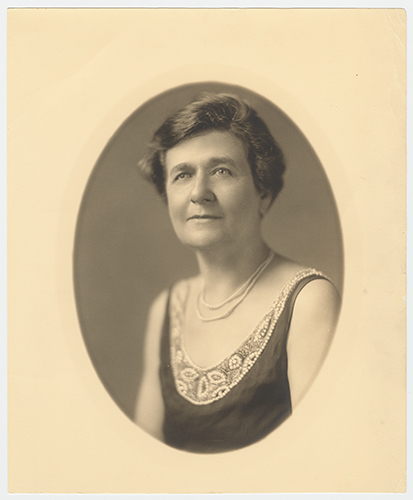
After a brief courtship, Garner married Mariette “Ettie” Rheiner on November 25, 1895, in the Christian Church in Sabinal. Ettie was the daughter of Peter Rheiner, a Swiss immigrant who spoke five languages, joined in the California gold rush, served in the Confederate army, and then moved to Texas. Ettie’s mother died when she was very young. She was educated at boarding school and met Garner after he heard about her opposition to his candidacy for Uvalde county judge. In an age when few women expressed their political opinions, Ettie opposed his candidacy because of his reputation for drinking and poker-playing. The couple had one son, Tully, born on September 24, 1896.
Cactus Jack, Texas representative
Garner made a successful run for state representative in 1898. During his two terms in Austin, he authored only a few bills and spent most of his time learning the procedures of the Texas House.
Garner earned the nickname “Cactus Jack” after he unsuccessfully proposed the cactus as the state flower. The bluebonnet prevailed, but the moniker “Cactus Jack” lasted a lifetime for the ambitious politician.
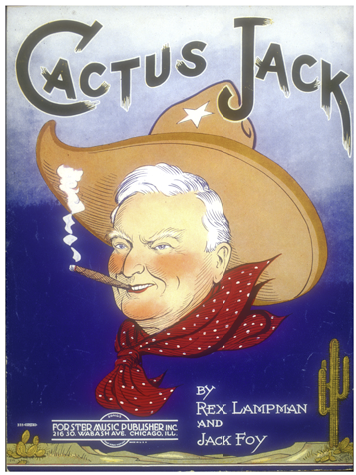
While in Austin, Garner secured the chairmanship of the House Committee on Congressional Districts. He worked to keep San Antonio out of the new Fifteenth District, which covered all of south Texas from Corpus Christi on the Gulf of Mexico, south to Brownsville, and west to Del Rio on the Rio Grande. Garner later termed the district simply as “the biggest in Texas.” Ironically, the district he helped create was also the district that he went on to represent for the next 31 years in Congress.
U.S. House of Representatives (1902–1933)
In 1902, Garner bested several experienced opponents to win election to the U.S. House of Representatives. At the time, no congressional office buildings had yet been built. The Garners moved into a K Street boarding house, which also served as his office. There they worked on congressional and constituent issues, with Ettie serving as secretary for the Fifteenth Congressional District. Ettie remained a vital force and capable administrator throughout her husband’s long political career.
The Democratic victory of 1910 gave the party control of Congress, and Garner’s colleagues elected him to the position of Democratic Party whip, the third-ranking House member. Garner’s influence and prestige increased throughout World War I and the 1920s, and House Democrats selected him as minority leader after the Republican sweep in the 1928 elections. When Democrats regained a majority in the congress in 1931, the House elected Garner as its speaker.
Vice President Garner (1933–1941)
As speaker, Garner became a nationally known figure. The press labeled him the “Texas Tiger,” “Texas Jack,” and “Chaparral Jack,” and speculation grew that he would seek the Democratic presidential nomination. Although Garner maintained that New York governor Franklin Roosevelt had the inside track to the nomination, many of the Speaker’s friends and supporters pushed him for the Democratic nomination. Garner-for-President clubs formed in Texas in December 1931. Garner sewed up the Texas delegation and won the California Democratic primary, but he trailed Roosevelt when the Democrats convened in Chicago in June 1932. Roosevelt led after the first three ballots but could not secure the necessary two-thirds majority from the delegates to win the nomination. Garner, wishing to avoid a debacle that would deadlock the convention, instructed that his delegates be released. California and Texas then switched to Roosevelt, giving him the nomination on the fourth ballot.
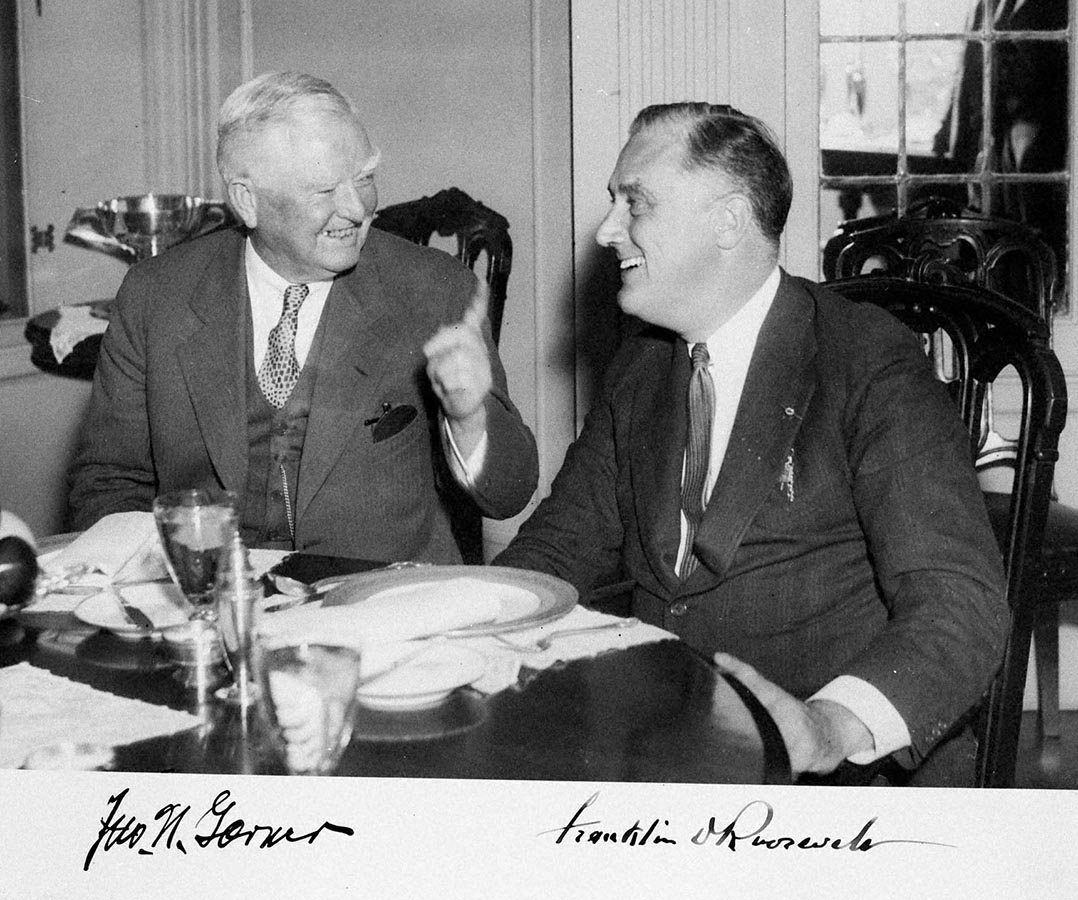
Following FDR’s nomination, Democratic delegates unanimously picked Garner for vice president. Roosevelt and Garner won a landslide victory in November 1932. Garner would alter the vice presidency in an unprecedented manner. Never the “spare tire” on Roosevelt’s team, he attended and actively participated in Roosevelt’s cabinet meetings on national policy and legislative strategy. He thus effectively transformed what had been a largely ceremonial office into an influential executive and legislative position.
Garner quickly became, after the president, the single most important man in government and, arguably, the nation. Within days of the November election, Roosevelt began consulting Garner on the administration’s legislative agenda. Garner’s political knowledge along with his great persuasive powers and the respect in which he was held proved to be invaluable. He steered a number of important bills through Congress in the crisis atmosphere of FDR’s first one hundred days. These New Deal programs included the Emergency Banking Relief Act, the Federal Emergency Relief Act, the Federal Deposit Insurance Corporations (FDIC), the Federal Securities Act, the Civilian Conservation Corps (CCC), the National Industrial Recovery Act (NIRA), and the Public Works Administration (PWA).
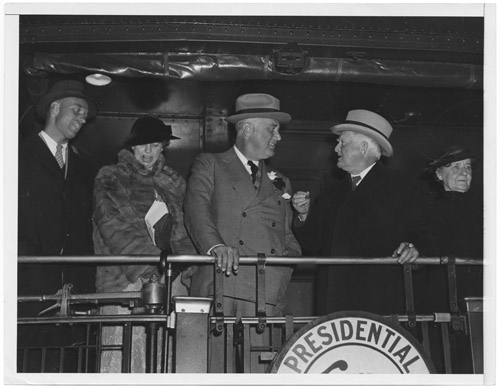
Democrats enthusiastically renominated Roosevelt and Garner at their 1936 convention in Philadelphia. The incumbents swept the election in the greatest presidential landslide in modern U.S. history. During Roosevelt’s second term, however, Garner’s philosophy came into conflict with the president’s. As Garner’s hopes of paring programs and balancing the budget faded, the Roosevelt-Garner relationship suffered. The president’s “court-packing” plan of 1937 widened the rift. The final blow came when the president attempted to purge opposition Democratic members of Congress in the 1938 elections.
Garner challenged Roosevelt in a series of early primaries in 1940, but Roosevelt won several states handily before officially declaring his intent to run for an unprecedented third term. Roosevelt went on to win the nomination and the election. Garner made his last appearance in Washington at the 1941 inauguration of President Roosevelt and Vice President Henry Wallace. On January 21, 1941, Garner boarded the train for his Uvalde home. He never crossed the Potomac again.
Return to Uvalde
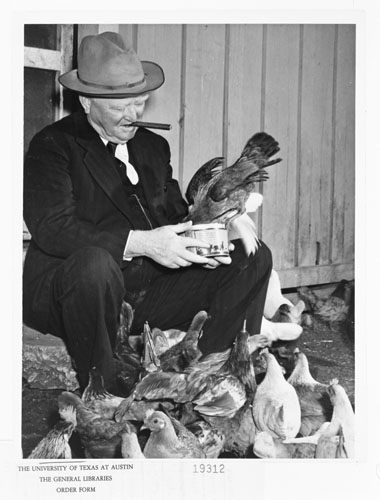
In Uvalde, Garner spent many long hours hunting and fishing with his friends along the shady banks of the Frio River. The hospitable Garner often entertained visitors, both acquaintances and others who simply wanted to shake the hand of Cactus Jack. President Roosevelt came in 1942 and President Truman arrived during his successful reelection campaign in 1948. By the 1950s, Garner’s November 22 birthday was an annual celebration, with national and state Democrats in attendance.
The Garners celebrated their golden wedding anniversary on November 27, 1945. Ettie Garner passed away at the age of 78 in 1948. Garner died at his Uvalde home on November 7, 1967, only 15 days shy of his 99th birthday.
John Nance Garner Papers, 1874–1968
Vice President Garner’s papers are part of the center’s congressional and political history collections and are available in the center’s Research and Collections Division located on The University of Texas at Austin campus. The finding aid for the John Nance Garner Papers can be found here.
Additional resources on Garner can be found at the Biographical Directory of the United States Congress.
Cactus Jack of Texas: The Life and Career of John Nance Garner exhibition
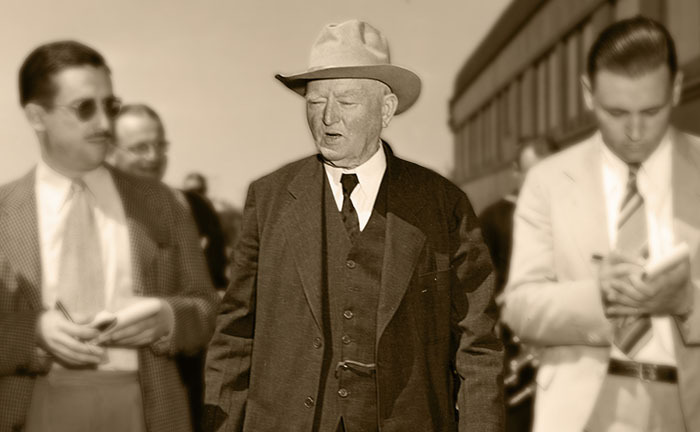
Cactus Jack of Texas: The Life and Career of John Nance Garner details the remarkable life and career of Garner, the most powerful vice president in U.S. history and the second most powerful politician in the U.S. during the Great Depression of the 1930s. Through a selection of documents and personal artifacts, the exhibit covers Garner’s early childhood and career as a lawyer and judge in Uvalde, his marriage to life partner Ettie Rheiner, his influential work as a congressman in the Texas Legislature, Speaker of the House of Representatives, and Vice President in the administration of Franklin D. Roosevelt, to his eventual retirement in Uvalde. Many documents underscore Garner’s colorful personality and unique ability to forge friendships and pass bipartisan legislation on an astounding scale. Learn more about this permanent exhibition displayed on the first floor of the Briscoe-Garner Museum.
Cactus Jack: Lone Star on Capitol Hill
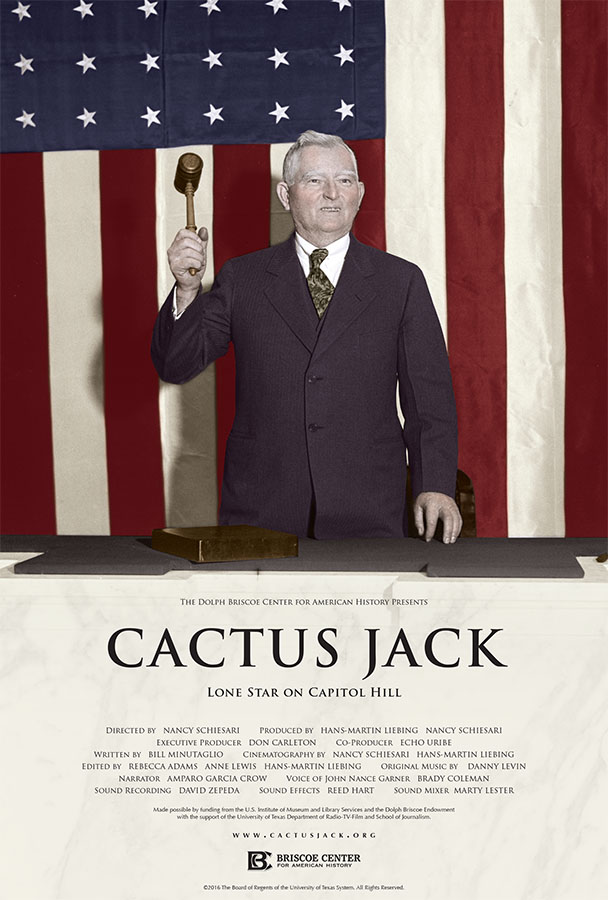
The film Cactus Jack: Lone Star on Capitol Hill is a 2016 documentary that highlights the life and work of John Nance “Cactus Jack” Garner, who made his way from Blossom Prairie, Texas to the Vice Presidency of the United States. Garner’s 38-year Congressional career culminated in his tenure as Speaker of the House from 1931 to 1933 during the onset of the Great Depression. He then served two terms as Franklin Delano Roosevelt’s Vice President. During the latter term, a deep rift with Roosevelt saw Garner return home to Texas.
Produced by The University of Texas at Austin’s Briscoe Center for American History the project was made possible by funding from the U.S. Institute of Museum and Library Services and the center’s Briscoe Endowment.
Learn more about this documentary film.


